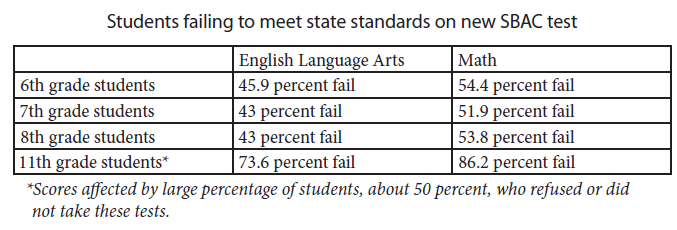![]() Download a PDF of this Legislative memo with sources and citations here.
Download a PDF of this Legislative memo with sources and citations here.
Key Findings
- Tutoring is a proven and effective way to give students the one-on-one help they need to catch up in areas of academic weakness.
- The federal government gives parents funds to purchase tutoring services through the successful Supplemental Education Services program (SES).
- High school graduation rates show about one in four students fails to graduate. One in three low-income and minority children fail to earn a high school diploma.
- SB 6368 would be a good step towards providing after-school tutoring to middle-school students who need extra help in school.
The Senate Commerce and Labor Committee is considering a bill to create a pilot program to provide after-school tutoring for middle school students, SB 6368, sponsored by Senators Hobbs (D-Lake Stevens) and Pearson (R-Sedro-Woolley).
SB 6368 would offer all 32 middle schools in Snohomish County an after-school tutoring program for students with low grades, at a contract cost of $35,000 per school. The program would be optional to the schools, and administered through the Department of Commerce. If all schools participated, the program would cost $1.12 million.
Tutoring is a proven and effective way to give students the one-on-one help they need to catch up in areas of academic weakness. A tutor can identify and help a student fill holes in his knowledge and skills. A tutor can help a student repair his confidence and motivation to learn. Often parents will hire a private tutor if a child struggles in math or reading, if the family can afford the extra cost.
The federal government already provides tutoring services to low-income students in low-performing schools through the Supplemental Education Services program (SES). Under the No Child Left Behind Act, school districts have been required to offer parents federal Title I funds if their schools failed to make adequate progress under the law. In school year 2014-15 the Washington State Office of Superintendent of Public Instruction reported that 13,040 students received tutoring in Washington state, in 193 of Washington’s 295 school districts. The SES program was very popular with parents. Of 794 parents who responded to surveys, 88 percent reported their students performed better in school because of the tutoring program, and 95 percent said they would re-enroll their student in the program.
Since Congress and President Obama have recently replaced the No Child Left Behind law with a new federal education law, the SES program is now being phased out. Students and parents in Washington state will no longer have access to federal funds to purchase tutoring services.
Providing middle-school students a tutoring option under SB 6368 would represent a partial replacement of the successful federal program. One possible source of funding for SB 6368 could be the Learning Assistance Program (LAP) funded by the state of Washington, which provides extra funding to school districts to assist underachieving students. In the current 2015-17 Operating Budget, Washington state provides $450 million for the LAP program. Unfortunately, the LAP statute requires districts to use LAP funds first on students in kindergarten through fourth grade. See RCW 28.165.005 (2).
Programs like SB 6368 would make better use of existing school resources. Under SB 6368, only 4 cents of every dollar would be withheld for administering the program, with 96 cents of every dollar providing individual students one-on-one tutoring help. By contrast, remedial public programs in the schools deliver only 60 cents of the dollar to classroom teaching.
High school graduation rates from Washington’s schools show that about one in four students fails to graduate. Low-income and minority children have higher drop-out rates, with one in three failing to earn a high school diploma. In addition, student test scores on the new Smarter Balanced Assessment (SBAC) for 2014-15 show many Washington middle school students have specific gaps in their learning. The Office of Public Instruction reports these statewide results for students in 6th grade and above:

These academic results show many students are being left behind in Washington’s schools.
SB 6368 would be a good step towards directly delivering educational opportunities, like after-school tutoring, to students who need extra help in school.



